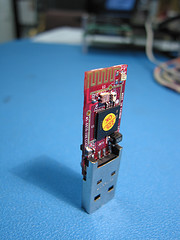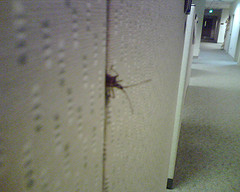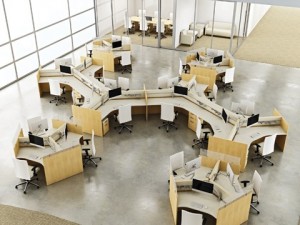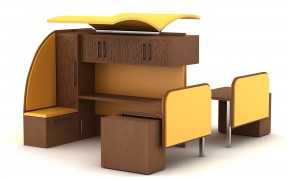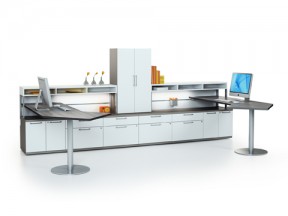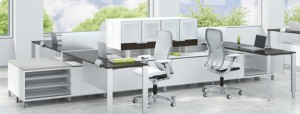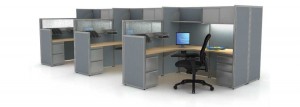We’re headed across the country again in this second post on the NeoCon East office furniture show. This time, let’s take a journey through Inscape System. This “Inscape” workstation and panel solution is designed to help employers “Escape” from wasted space and confusing office furniture specification. Like many popular cubicle brands, the goal of this product is to provide a wide range of pieces that can be mixed and matched with little effort. Ensuring interoperability of as many parts as possible provides more options while ensuring that future expansion is seamless and worry free.
Conserving Office Space Inch by Inch
The most well-publicized feature of Inscape’s product line is the ability to use multiple panel thicknesses to save space here and there without any integration issues. The extra inches you save can add up to quite a few square feet – perhaps even enough to comfortably accommodate a couple more workstations as your company grows.
For locations where you don’t need full 3.5” panels, you can install 2.75” panels instead. The universal connectors work with either one – you just flip the connector over from position A to position B to connect two thin panels rather than two thick ones. The frame and tile components are identical for both. It’s the clip components that determine the interior dimensions of the panel. Worksurfaces and other parts work equally well with both panel thicknesses because the frames are all the same.
Beneath the Surface
Although the lines and shapes of Inscape’s designs are simple, what you see is not all you get with this system. The post and beam structure that supports panels and movable walls also houses power distribution. This means it can be used for data cable and electrical wiring management just as easily in a private office as in a cubicle. Again, it’s all about one stop shopping with these guys.
